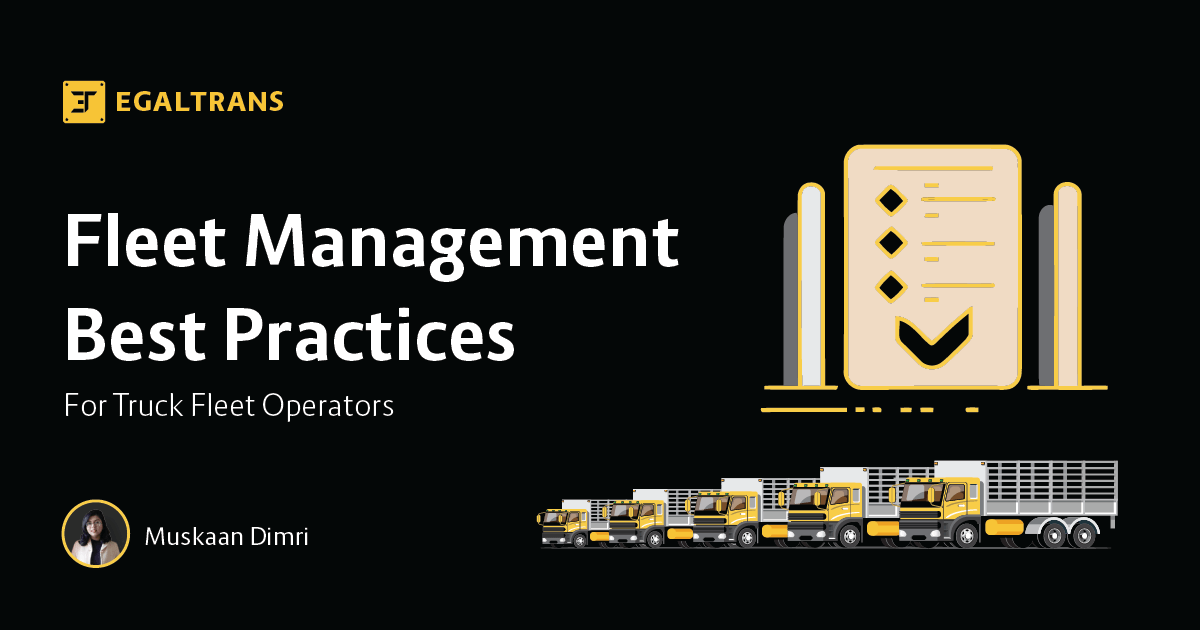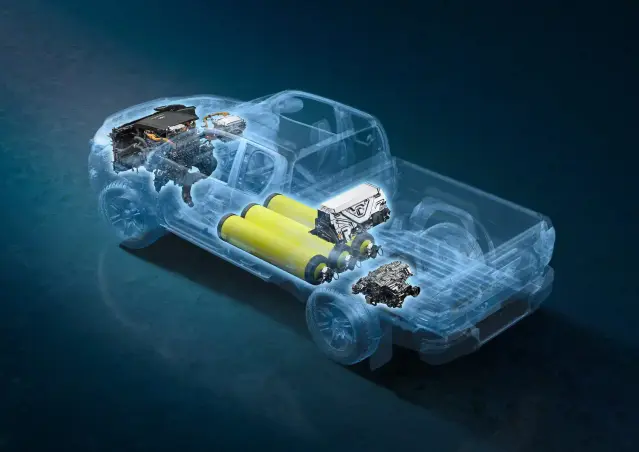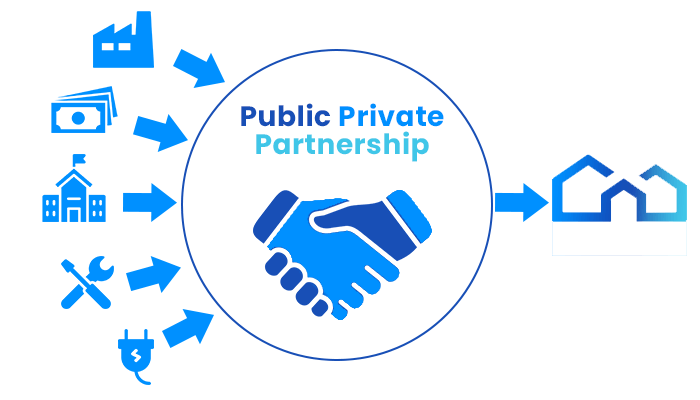Fleet Management Best Practices in 2024
Mia Wilson

Photo: Fleet Management Best Practices in 2024
Fleet management is an essential component of many industries, from logistics and transportation to utilities and public services. As businesses adapt to evolving technologies and market demands, fleet management practices must also evolve. In 2024, adopting innovative and efficient strategies is not just a competitive advantage but a necessity. This article explores the best practices in fleet management for 2024, emphasizing operational efficiency, sustainability, and cost-effectiveness.
Introduction: Why Fleet Management Matters
Fleet management encompasses the coordination, tracking, and maintenance of vehicles used in business operations. Effective fleet management ensures that vehicles operate efficiently, safely, and economically. With the rising cost of fuel, growing environmental concerns, and advancements in telematics, businesses must refine their approaches to fleet management.
Key Challenges in Fleet Management Today
- Rising fuel costs and fluctuating prices
- Regulatory changes related to emissions and vehicle safety
- Increasing customer expectations for timely and transparent services
- The integration of new technologies, such as electric vehicles (EVs) and autonomous systems
To address these challenges, organizations need to focus on best practices that align with modern demands.
The Pillars of Effective Fleet Management in 2024
1. Leveraging Telematics and Data Analytics
Telematics systems provide real-time data on vehicle performance, location, and driver behavior. This technology allows fleet managers to make data-driven decisions, improving operational efficiency and reducing costs.
- Key Benefits:
- Optimized routes to reduce fuel consumption.
- Enhanced driver safety through monitoring and coaching.
- Proactive maintenance scheduling based on real-time diagnostics.
Tip: Invest in a robust telematics solution that integrates with your existing fleet management software for seamless operations.
2. Prioritizing Preventive Maintenance
Vehicle downtime can be costly, both financially and operationally. Preventive maintenance ensures that vehicles are inspected and repaired before issues arise, minimizing unexpected breakdowns.
- Best Practices:
- Create a maintenance schedule based on manufacturer recommendations and vehicle usage.
- Use fleet management software to track maintenance history and set automated reminders.
- Train drivers to report minor issues promptly.
Insight: Preventive maintenance not only extends vehicle life but also enhances safety and compliance with regulations.
3. Transitioning to Sustainable Practices
Sustainability is a growing priority in fleet management. Reducing carbon emissions and adopting greener practices not only align with regulatory requirements but also appeal to environmentally conscious customers.
- Steps to Adopt:
- Transition to electric or hybrid vehicles where feasible.
- Implement fuel-saving techniques, such as optimizing load distribution and reducing idling time.
- Partner with suppliers who share a commitment to sustainability.
Data Point: According to a 2023 report by the International Energy Agency, EVs are expected to account for 35% of fleet vehicles by 2030, underscoring the importance of early adoption.
4. Enhancing Driver Training and Engagement
Drivers play a pivotal role in fleet efficiency and safety. Investing in their training and well-being can yield significant benefits.
- Training Focus Areas:
- Defensive driving techniques to reduce accident risks.
- Fuel-efficient driving practices, such as smooth acceleration and maintaining optimal speeds.
- Familiarization with new technologies, including telematics and EV systems.
Tip: Foster a culture of collaboration by recognizing top-performing drivers and addressing challenges they face on the road.
5. Optimizing Fleet Utilization
Efficient fleet utilization ensures that every vehicle contributes to the business's goals without unnecessary costs.
- Strategies:
- Conduct regular reviews of fleet size and composition.
- Use data analytics to identify underutilized vehicles and reassign or retire them.
- Implement dynamic scheduling to match vehicle availability with demand.
Example: A logistics company reduced its fleet size by 15% after analyzing usage patterns, saving over $100,000 annually in operational costs.
6. Integrating Advanced Technology
Emerging technologies are transforming fleet management. From artificial intelligence (AI) to blockchain, these innovations offer new ways to enhance operations.
- Noteworthy Technologies:
- AI-powered route optimization: Reduces travel time and fuel costs.
- Blockchain: Enhances transparency in vehicle leasing and maintenance records.
- Autonomous vehicles: Though not widespread, they promise to revolutionize logistics in the future.
Future Insight: Stay informed about technological advancements and assess their feasibility for your fleet to maintain a competitive edge.
Overcoming Common Fleet Management Pitfalls
Despite the benefits of adopting best practices, challenges can arise. Here’s how to navigate them:
- Resistance to Change: Involve stakeholders early in decision-making processes and communicate the benefits of new initiatives.
- Budget Constraints: Start small by prioritizing high-impact, low-cost solutions, such as driver training and preventive maintenance.
- Data Overload: Use fleet management software with intuitive dashboards to avoid being overwhelmed by information.
Conclusion: The Road Ahead for Fleet Management in 2024
Fleet management in 2024 is defined by a blend of technology, sustainability, and efficiency. By adopting practices such as leveraging telematics, prioritizing preventive maintenance, and transitioning to sustainable operations, businesses can reduce costs and improve performance. The integration of driver training and advanced technologies ensures a future-ready fleet that aligns with industry trends.
As the landscape continues to evolve, staying adaptable and proactive is key. Fleet managers who embrace innovation and focus on continuous improvement will not only meet current demands but also position their businesses for long-term success.
For You
View AllDive into how hydrogen fuel cell cars work and their potential to revolutionize green transportation. Start exploring today!
Mia Wilson
Maximize your luggage space and save money with these packing hacks for budget travelers. Simplify your trips today!
Mia Wilson
Discover the latest breakthroughs in electric vehicle technology and why they are shaping the future of transportation. Explore now!
Mia Wilson
Understand what public-private partnerships are and how they drive infrastructure development. Click to learn more!
Mia Wilson
Dive into breathtaking adventure destinations for nature lovers. Discover serene trails, lush forests, and untouched landscapes waiting for you.
Mia Wilson
Discover effective strategies to protect your VPS from cyber threats.
Mia Wilson
Health










Education
View All
May 10, 2025
How to Become a Diabetes Educator
Learn the steps to becoming a certified diabetes educator and making a meaningful difference in patients’ lives. Start today!

May 6, 2025
What Can You Do With a Master’s in Education?
Explore the career opportunities and advancements possible with a master’s in education. Take the next step today!

April 26, 2025
How to List Education on Your Resume
Discover the best ways to showcase your education on a resume for maximum impact. Land your dream job now!





